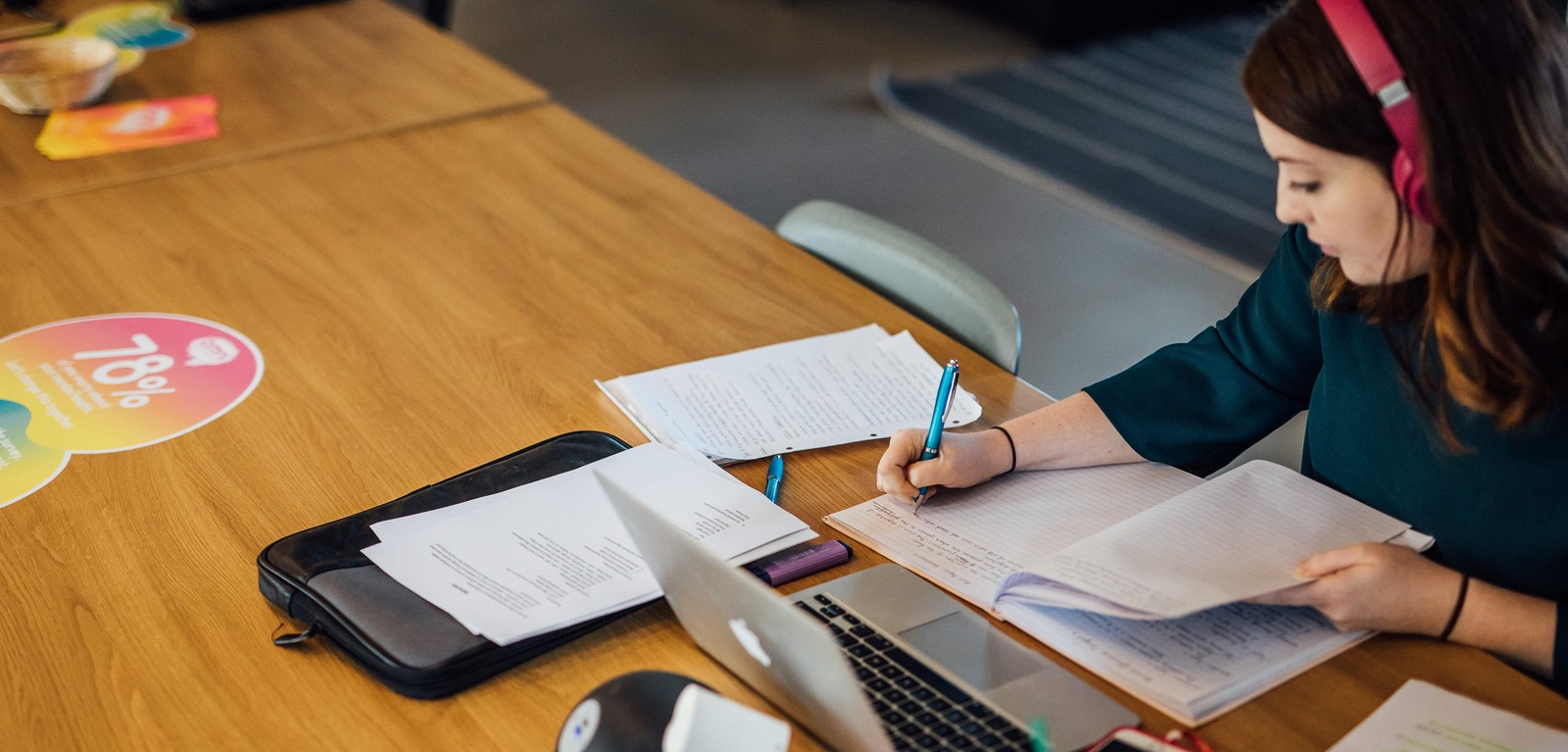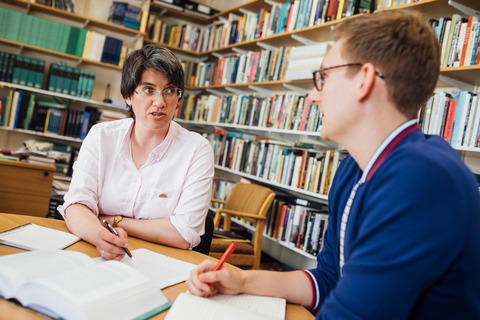The Ultimate Guide to UCAS Applications (original) (raw)

What is UCAS?
The University and Colleges Admissions Service, or UCAS, is responsible for processing applications for undergraduate degrees in the United Kingdom. With the help of this centralised online platform, students can apply for up to five different courses with only one application.
Your University Application: The Step-by-Step Guide
1. Research your options
University is a big investment, and you want to make sure you choose the right place and course! Before even making a start on your application, you need to carry out some research.
Have a look at different courses available at your desired universities and then consider the following:
- Look at the modules for your chosen subject – do they align with your interests?
- How will the course be taught?
- How will the course be assessed?
- Does the course have a placement year?
- Does the course have any particular grade or subject requirements?
- Research the city and surrounding areas
- Speak with some current students studying at the university
- How much will it cost? Think about living costs at this stage also!
- What student support is available?
- What is the accommodation like?
2. Registering with UCAS
Once you have researched your options, it’s time to create an account on the UCAS online hub to get your application started.
If you’re applying through a school or college, they may give you a ‘buzzword’ to enter when registering to automatically link your application to that centre. If you’re applying independently, you can still register without a buzzword.
The application process is quite long, some sections will be quick to complete while others may need more of your time. The important thing to remember is that you don’t have to complete your application all at once, simply save your progress and return to it as many times as needed before the submission deadlines.
3. Personal Information
Next, fill in your details and answer a few questions.
UCAS will ask you to link an email address to your account—use a personal email that you check regularly as UCAS will be sending application updates directly to this email, and some universities may contact you directly. You can change your email address later if needed.
You’ll be asked about things like your residency status, ethnic background, and what your parents do for work. This helps universities understand your situation better and offer any support you might need. You’ll also need to share how you plan to pay for your studies.
If you’d like someone, like a parent or guardian, to speak to UCAS on your behalf, you can choose that option here too.

4. Education History
In this section, you must enter all your qualifications from secondary education onward.
Even if you don’t have your final exam grades yet, you still need to list your qualifications and mark them as pending. If you’re waiting on results or are still studying and have added a referee that is one of your teachers, they will add your predicted grades. Some universities require predicted grades to consider your application.
5. Employment History
If you’ve had a part-time or full-time job, enter the details for up to five roles. If you don’t have any work experience, simply leave this section blank and mark it as complete.
If you’ve done any unpaid work experience or volunteering, don’t mention it here—save it for your personal statement.
6. Selecting five courses
As we mentioned, you can apply for up to five different universities and courses. At this stage, you don’t need to put them in preference order as universities can’t see where you’ve applied to until after you reply to your offers.
For students hoping to study medicine, dentistry, veterinary medicine or veterinary science, you can only apply to a maximum of four courses in any one of these. You can add a choice with a different deadline at a later stage but don’t forget that you only have five choices in total.
7. Personal Statement
Note: In July 2024, UCAS announced that for 2026 entry applications, the personal statement will be replaced with three questions:
- Why do you want to study this course or subject?
- How have your qualifications and studies prepared you for this course?
- What additional experiences outside of education have prepared you, and why are they important?
The personal statement is your chance to tell universities why you want to study with them and what makes you stand out from other applicants.
Your statement must be at least 1,000 characters long, with a maximum of 4,000 characters or 47 lines—whichever comes first.
Be sure to write your personal statement in a Word document before pasting it into your UCAS application, as the UCAS system doesn’t check for spelling or grammar errors!
Here’s what you should include:
- Why the subject interests you: Share what excites you about the subject and why you want to study it at university. Mention specific topics you’re eager to explore, whether you encountered them at school or on your own.
- Academic experience: Highlight your current studies and how they relate to the courses you’re applying for. Talk about your subjects, any projects or assignments you’ve done, and mention any academic awards or achievements.
- Work or volunteering experiences: Include any relevant work or volunteer experience. For example, if you’ve shadowed someone in your desired career, explain how that experience gave you insight into the job. Connect these experiences to skills that will help you succeed in your studies.
- Personal skills and qualities: Universities want to know about the skills and achievements that will help you thrive both in your course and in university life. Emphasise skills like critical thinking, problem-solving, communication, or teamwork. This is your chance to show what makes you unique, so highlight what you’re most proud of and back it up with evidence.
- Extracurricular activities: Mention any clubs, societies, or hobbies that demonstrate your passion for the subject or your personal growth. This is also a good place to talk about leadership roles or responsibilities, like being a team captain or a student council rep.
8. Submitting your application
After completing your application, give it a thorough review and make any final edits. Then, read and agree to the declaration. This allows UCAS to process your application and send it to your chosen universities.
9. Getting a reference
How you get a reference for your application will depend on whether you’re applying through a school or college, individually or a centre registered with UCAS. Only one reference is needed for your application.
Here are some tips on how to choose a referee for your application:
- If you’re in education or have recently been in education, you may ask someone who knows you academically such as a teacher. You want your reference to be able to provide supporting information relevant to the courses you’re applying for, along with any predicted grades for the qualifications you’re studying for.
- If you are a mature student and have not been in education for some time, universities and colleges may accept a different type of reference, such as an employer or colleague. If you’re unsure of who to choose as a reference, contact your chosen institutions.
- Do not ask family, friends or ex-partners to be a reference.

10. Application Fee
UCAS charges a fee to submit your application, which you can find more information about here.
If you’re applying through a school or college, they’ll complete your reference and submit your application once you’ve paid. If you’re applying independently, you can pay and submit your application once your reference is ready.
What happens after you send your application?
Tracking
After submitting your UCAS application, you can monitor its status through your personal UCAS account.
Ideally, you should submit your application before the October (for Medicine, Dentistry, and Veterinary courses) or January deadlines. Some universities may still accept applications after these dates, but they might not give them the same consideration.
Offers
Through UCAS, you can receive three types of offers:
- Conditional: You’ll have a place at university if you meet the conditions of your offer, such as achieving specific grades.
- Unconditional: You have a guaranteed place because you’ve already met all the entry requirements.
- Unsuccessful: The university cannot offer you a place on your chosen course.
For some courses, universities may invite you to interview before making an offer. You’ll be notified about this through your UCAS account, or the university may get in touch directly. The deadline for universities to make offers is around mid-May if you have submitted your application by the January deadline.
Once you’ve heard back from all five choices, you’ll have a personal deadline in your UCAS account by which you must accept a firm offer and an insurance choice.
It’s important to note that once you accept your firm choice, you’re committed to attending that university. If you change your mind, you can’t accept your other offers, but you may be able to use the UCAS Extra service or Clearing.
What is UCAS Extra?
UCAS Extra allows you to apply for additional courses if you’re not holding any offers or if you’ve rejected your offers. However, if you add another choice through Extra, you won’t be able to revert to your original five choices.
What is Clearing?
UCAS offers Clearing, which opens in July and allows universities to advertise places in courses that haven’t been filled. You can use Clearing if you’re not holding any offers or didn’t meet the conditions of your offers on results day.
What if your results are better than expected?
If you managed to meet and exceed the conditions of your firm offer, you might be thinking of exploring an alternative course requiring higher grades. If you find this in your situation, you can use the Clearing service to see what courses are available.
I want to defer my entry
If you have decided you want to take a gap year before starting university, you may be able to defer your entry. You will need to check if the course and university allow deferred entry by contacting them directly.
Find out more
Queen's University Belfast - UCAS Profile
Undergraduate applicant information
| Zoe Brankin Staff Writer | Queen's Global Hi, I’m Zoe, and I’m proud to be part of the Queen's Global team. Over the past six years, I’ve held roles that let me create content for a variety of audiences, from start-ups to larger organisations. At Queen's, I’m always exploring new and creative ways to bring fresh content ideas to our main website. Outside of work, I love reading (I even run a local book club), spending time with my dogs, and never missing an opportunity for a coffee or brunch outing. |  |
|---|